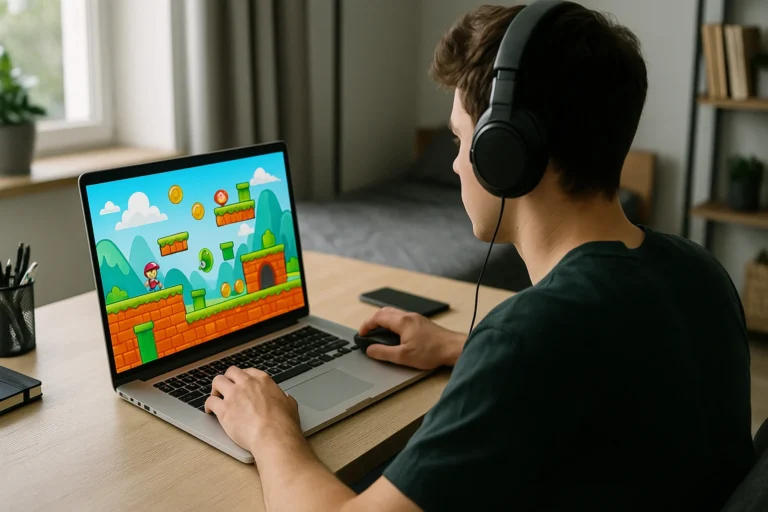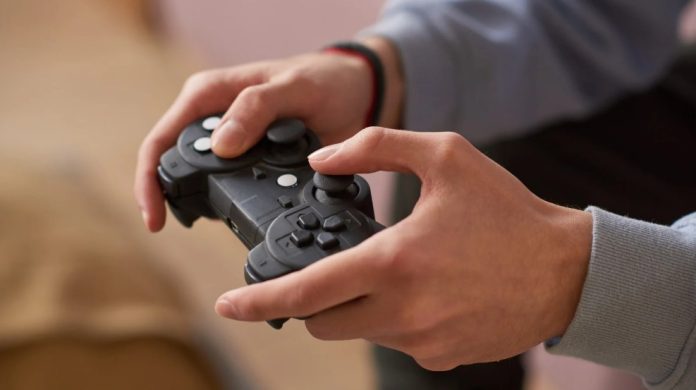Remember those carefree days of childhood, where laughter echoed through classrooms and friendships blossomed over simple games? One of the classics that always brings joy is the “Heads Down Thumbs Up” game. Whether you want to revive nostalgic memories or introduce a new generation to this timeless favourite, you’re in for a treat!
In this blog post, we’ll dive into the rules, variations, and fun tips for making your next gathering unforgettable. So gather your friends and family—let’s rediscover why “Heads Down Thumbs Up” continues to be a go-to choice for endless entertainment!
What is Heads Down Thumbs Up Game?

Heads Down Thumbs Up is a classic schoolyard game popular in UK classrooms for generations. Known for its simplicity and fun, the game involves a mix of stealth, strategy, and a bit of luck, making it a perfect activity for children.
Typically played in classrooms as a break-time activity, Heads Down Thumbs Up is also popular at parties and gatherings, offering a great way to engage large groups of kids. Its timeless appeal lies in its easy setup, minimal equipment, and the excitement of guessing who tapped your thumb.
How to Play Heads Down Thumbs Up?

What Do You Need to Play Heads Down Thumbs Up?
To play Heads Down Thumbs Up, you don’t need any special equipment, which is part of its charm. Here’s what you’ll need:
- Number of Players: The game works best with a group of at least 10 players, but it can be adapted for smaller or larger groups. The more players involved, the more fun and challenging the game becomes.
- Ideal Settings: This game is traditionally played in a classroom setting, but it can also be played at parties or any gathering where there are enough participants. A quiet room is ideal, as it helps the players concentrate and adds to the suspense of the game.
What Are the Basic Rules of Heads Down Thumbs Up?
Understanding the basic rules is crucial for playing Heads Down Thumbs Up effectively. Here’s how the game is played:
What is the Objective of the Heads Down Thumbs Up Game?
The goal of Heads Down Thumbs Up is for the players who are “it” (the ones who tap) to remain undetected while the rest of the players try to correctly guess who tapped their thumb.
How to Start the Heads Down Thumbs Up Game?
- Choose a few players (usually around 3-5) to be the “tappers.” These players will walk around and lightly press down on the thumbs of other players.
- The remaining players sit at their desks or in a circle with their heads down and eyes closed. They extend one thumb up in front of them, making it accessible for the tappers.
How to Play a Round in Heads Down Thumbs Up?
- The tappers quietly walk around the room and each tap the thumb of one other player.
- Once a player’s thumb has been tapped, they keep their thumb down.
- After all the tappers have tapped a thumb, the teacher or leader says, “Heads up, thumbs up!”
- The tapped players then raised their heads and tried to guess which tapper touched their thumb.
How to Win the Heads Down Thumbs Up Game?
- If a player correctly guesses who tapped their thumb, they switch places with the tapper and become a tapper in the next round.
- If they guess incorrectly, the tapper remains in their role for the next round.
- The game continues until all players have had a chance to be the tapper or until the group decides to stop.
What Are the Strategies and Tips for Playing Heads Down Thumbs Up?

How Can You Increase Your Chances of Winning in Heads Down Thumbs Up?
While Heads Down Thumbs Up is largely a game of chance, a few strategies can improve your odds:
- Observing Your Surroundings: Even with your head down, you can sometimes pick up on subtle clues like the sound of footsteps or the direction they came from. Pay attention to these details to make a more informed guess.
- Strategic Thumb Selection: If you’re a tapper, try to vary your approach. Avoid tapping the same people each time or following a predictable pattern. This makes it harder for players to guess who tapped them.
What Are Common Mistakes to Avoid in Heads Down Thumbs Up?
Avoid these pitfalls to enhance your gameplay experience:
- Giving Away Your Identity: If you’re a tapper, try not to make any noises or movements that might give you away. Quiet shoes and careful steps are essential.
- Picking the Same Players Repeatedly: As a tapper, don’t tap the same players too often. This makes it easier for them to guess who tapped their thumb, reducing the challenge and fun of the game.
What Are the Variations of the Heads Down Thumbs Up Game?

How Can You Adapt the Game for Different Age Groups in Heads Down Thumbs Up?
Heads Down Thumbs Up is a versatile game that can be modified to suit various age groups:
- Simplified Rules for Younger Children: For very young children, consider reducing the number of tappers or allowing them to keep their eyes open but heads down. This makes the game easier to follow and less intimidating.
- More Challenging Rules for Older Players: To make the game more challenging for older children or adults, increase the number of tappers or limit the time players have to guess who tapped them. You can also introduce penalties for incorrect guesses to raise the stakes.
What Are Some Fun Variations of the Heads Down Thumbs Up Game?
Adding variations can keep the game fresh and exciting:
- Team-Based Heads Down Thumbs Up: Divide the players into teams. Each team has a set number of tappers, and they compete to see which team can guess the most correct tappers by the end of the game.
- Speed Rounds for Added Excitement: Introduce a time limit for guessing. For example, give players only 10 seconds to make their guess after the leader says, “Heads up, thumbs up!” This adds a sense of urgency and excitement to the game.
How to Set Up the Heads Down Thumbs Up Game?

How to Arrange the Players in Heads Down Thumbs Up?
The setup is crucial for the smooth running of the game:
- Classroom Setup: Have students sit at their desks or in a circle on the floor. Ensure that they have enough space to extend their thumbs without touching each other. The tappers should be able to move around the room easily.
- Party or Event Setup: If you’re playing at a party or event, arrange chairs in a circle or line the players up along a wall. Make sure the space is quiet enough to maintain the suspense of the game.
How to Explain the Rules to New Players in Heads Down Thumbs Up?
Explaining the rules clearly is essential for a fun game:
- Step-by-Step Instructions: Walk the players through the rules one step at a time. Start with how the game begins, then explain how the tappers move around, and finally, how players guess who tapped them.
- Demonstrations and Examples: If you’re playing with young children or first-timers, consider doing a quick demonstration round. Show them how to keep their heads down and thumbs up, and then model the tapping and guessing process.
Conclusion
Heads Down Thumbs Up is a timeless game that brings fun and excitement to any group setting. Whether you’re playing in a classroom, at a party, or just for fun with friends, this guide gives you everything you need to set up, explain the rules, and enjoy the game. With its simple rules and engaging gameplay, Heads Down Thumbs Up is sure to be a hit with participants of all ages.
FAQs about Heads Down Thumbs Up
What is the best age range for playing Heads Down Thumbs Up?
Heads Down Thumbs Up is typically suitable for children aged 5 and up, though it can be enjoyed by older children and even adults with some rule modifications.
Can Heads Down Thumbs Up be played with small groups?
Yes, the game can be adapted for smaller groups by reducing the number of tappers or playing multiple rounds to ensure everyone gets a chance to participate.
How long does a typical game of Heads Down Thumbs Up last?
A typical game can last anywhere from 10 to 30 minutes, depending on the number of players and how many rounds you play.
Are there any educational benefits to playing this game?
Yes, the game helps develop observation skills, memory, and social interaction, making it both fun and educational for children.
Can you play Heads Down Thumbs Up with adults?
Absolutely! With a few rule tweaks, Heads Down Thumbs Up can be a fun icebreaker or party game for adults as well.







